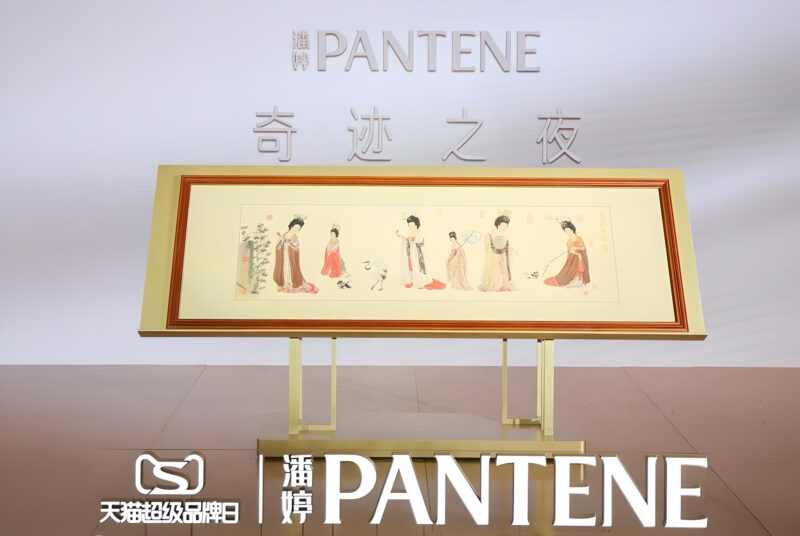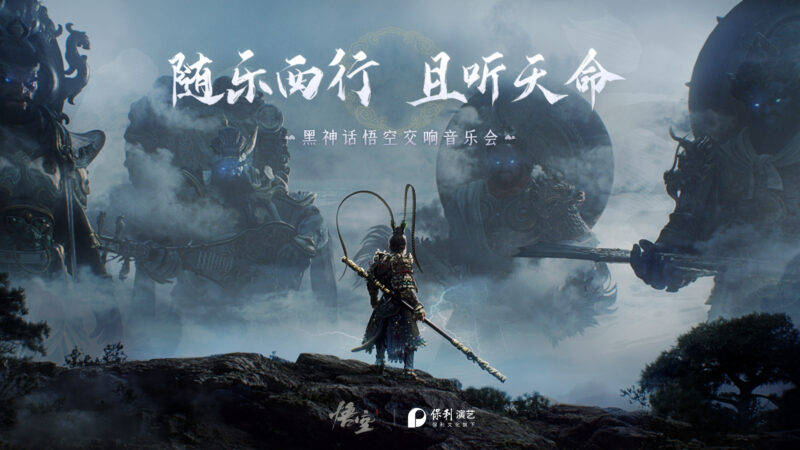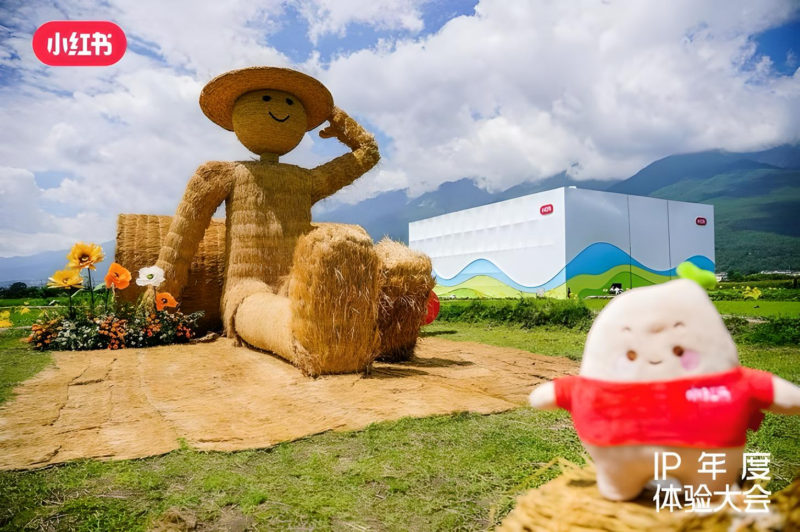Key takeaways:
- The scent and flavour of osmanthus have become an autumn staple in China in recent years.
- From tea chains to bottled drinks and home fragrances, the floral aroma has come to represent both the season of autumn and the Mid-Autumn Festival.
- Localised and seasonal marketing provides “emotional value”, while the flower’s cultural significance provides a “guochao” appeal.
It might sound like the sonnet about Pharaoh Ramesses II by Percy Bysshe Shelley, but it is only King of Kings among floral flavours in autumn in the “antique land” of China.
Osmanthus, or sweet osmanthus, is a flowering plant common in Asia, from Mainland China to Japan, Taiwan and Southeast Asia. It is the city flower of Hangzhou, Zhejiang, Suzhou, Jiangsu and Guilin, Guangxi. It has a distinctive sweet scent that is hard to miss and all-encompassing when the trees are planted in large quantities.
On 26 September, the topic “why is osmanthus scent late this year” (#今年的桂花香为何迟到了#) reached number 23 on the Hot Search list on Weibo, China’s Twitter equivalent, with 16.80 million views. The topic in discussion all over China, but especially in Henan province, is around why the osmanthus has not yet bloomed. The scent of the flowers is a seasonal feature in many Chinese provinces. Typically, the eighth month of the Chinese calendar (3 September to 2 October this year) would mean the fragrant osmanthus will cover parts of cities where they are planted. However, according to experts, the high temperature in September has caused the flowers to hibernate and wait until it is cooler and more humid before blooming.
Osmanthus has become the harbinger of autumn as the flavour would normally be heavily featured in many products
However, this won’t affect consumers. Osmanthus has become the harbinger of autumn as the flavour would normally be heavily featured in many products from food and beverages and FMCG, as well as in fragrances, similar to pumpkin spice in the West. Let’s see what the best osmanthus campaigns are this year.
New-style Chinese tea
The representative from the tea chains this year should be Mixue Bingcheng (AKA Mixue Ice Cream & Tea). Collaborating with the equally autumn (orange) Garfield from the comic strip of the same name. The collaboration, officially with the IP Garfield Family, includes two osmanthus-infused tea drinks, both with options of hot, cold or room temperature.
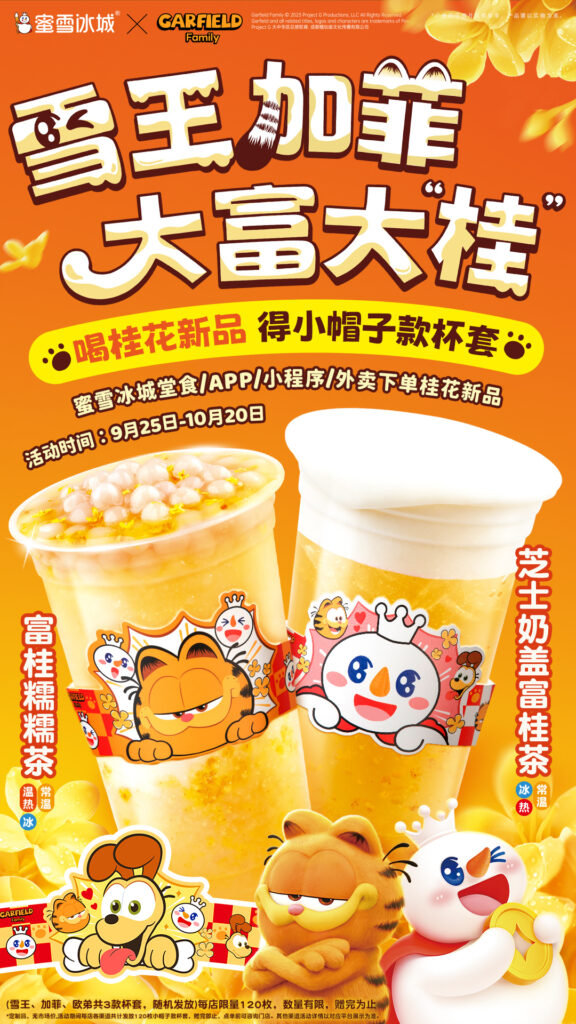
Playing on the character “桂”, meaning osmanthus sounded like “贵” of “富贵” (rich), the tagline is “大富大桂” (lit. very rich). The two drinks are “富贵糯糯茶” (lit. rich sticky osmanthus tea) and “芝士奶盖富桂茶” (cheese top rich osmanthus tea), one with sticky rice balls, the other with cream cheese top. Garfield merch is also included or available for purchase.
Another chain worth mentioning is HeyTea, whose seasonal product puts osmanthus in as a supporting role in the “sweet rice wine” flavoured teas. This is because the dessert the tea is based on is traditionally served with dried osmanthus as a garnish.
Message in a bottle
Naturally, the osmanthus flavour doesn’t only come in freshly-made tea drinks. The bottled water giant Nongfu Spring’s sugar-free tea label Oriental Leaf (东方树叶, sometimes DFSY) has brought back its popular seasonal osmanthus oolong tea once more. First introduced in 2021, the autumn exclusive has been known to sell out quickly, similar to its spring limited edition Longjing green tea. Each year, the sugar-free tea brand would launch a seasonal campaign to promote the re-release of the osmanthus-infused tea drink.
This year, Oriental Leaf collaborated with director Wang Xiaoheng, a frequent collaborator with the brand to produce a short film to promote the tea’s anticipated rerelease. Combining the tea, the season and the Mid-Autumn Festival, the film shows two generations of women sitting and chatting while sorting harvested osmanthus flowers before drying, sipping on the bottled tea and smelling the real osmanthus blooms.
Fragrance
Don’t let the edible nature make you think that only food and beverage brands can make use of the idiosyncratic scent of the flowers. For fragrance makers, as well as personal care brands, the flower has been a great source. Not only because of its unique smell but also because its Chinese and East Asia origins mean it is culturally significant, especially while the guochao trend is still relevant.
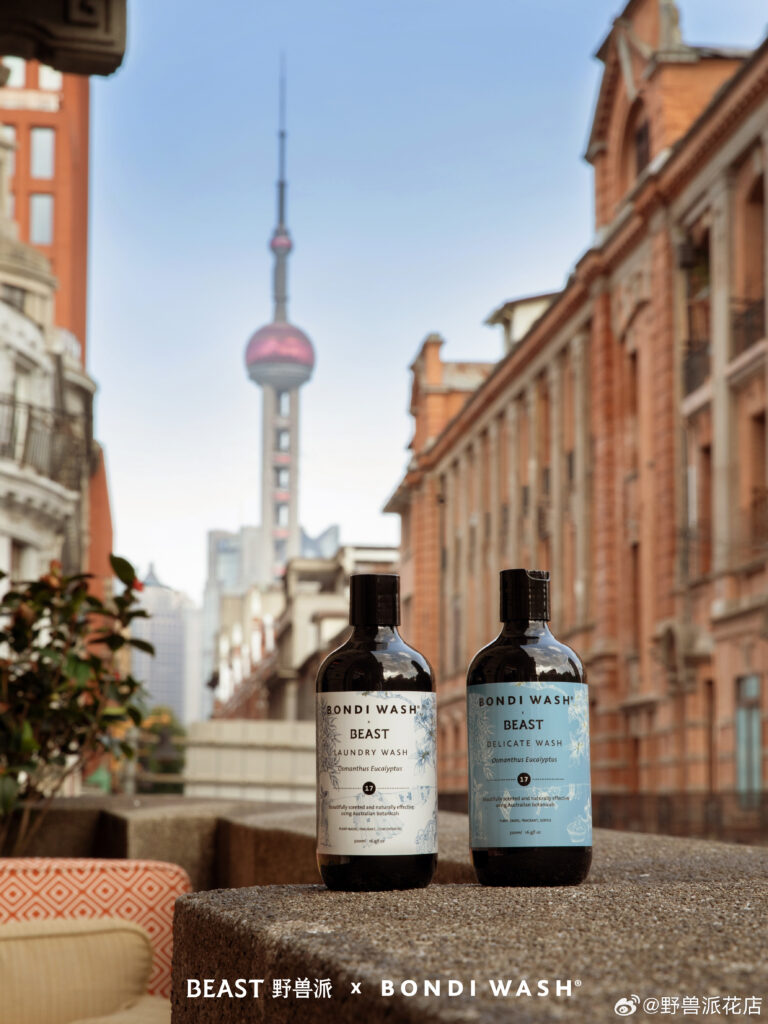
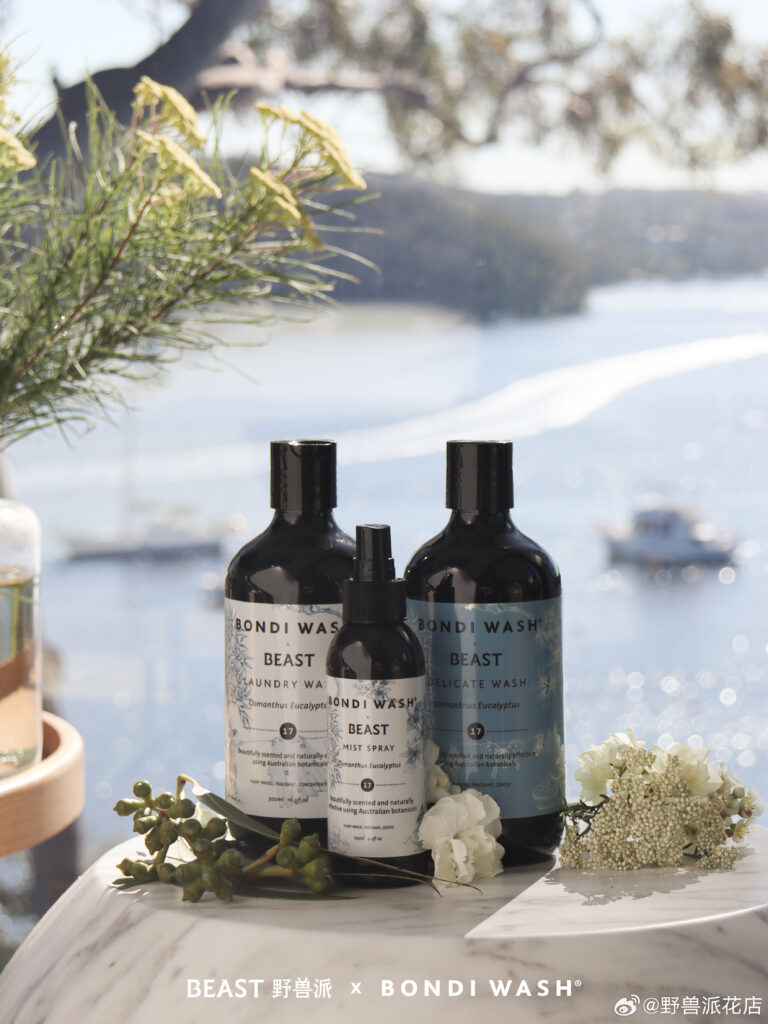
The Chinese luxury florist-turned-homeware brand BEAST (野兽派, lit. fauvist, sometimes THE BEAST) teamed up with Australian herbal home and body care brand to release a collection that combines the two partners in collaboration. A collection of 5 osmanthus and eucalyptus-scented products, from laundry wash to mist spray, as well as body wash products. The collaboration brings the two brands together by combining the almost stereotypical scents of Sydney and Shanghai into the product set.
Similarly, the New Chinese Style designer fragrance brand To Summer launched its Mid-Autumn campaign with an osmanthus-scented candle, in the shape of the moon rabbit. The autumn feel of the flower has been an inspiration for classical Chinese literature and contemporary guochao fans alike.
The autumnal feel of the flower has been an inspiration for classical Chinese literature and contemporary guochao fans alike
With the popularity of seasonal and regional marketing campaigns, brands seek to provide “emotional value” to consumers by making locations and occasions special. Whether it’s jasmine and gardenia teas in the spring or osmanthus in the autumn. By making use of traditional Festivals like Mid-Autumn, brands can also pay tribute to Chinese culture.





